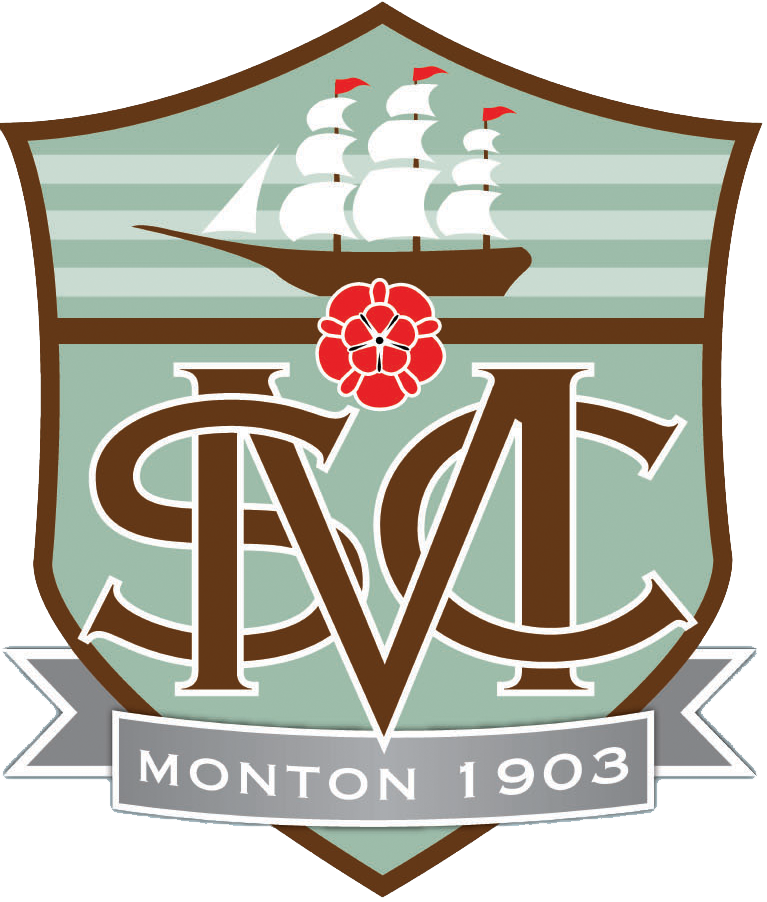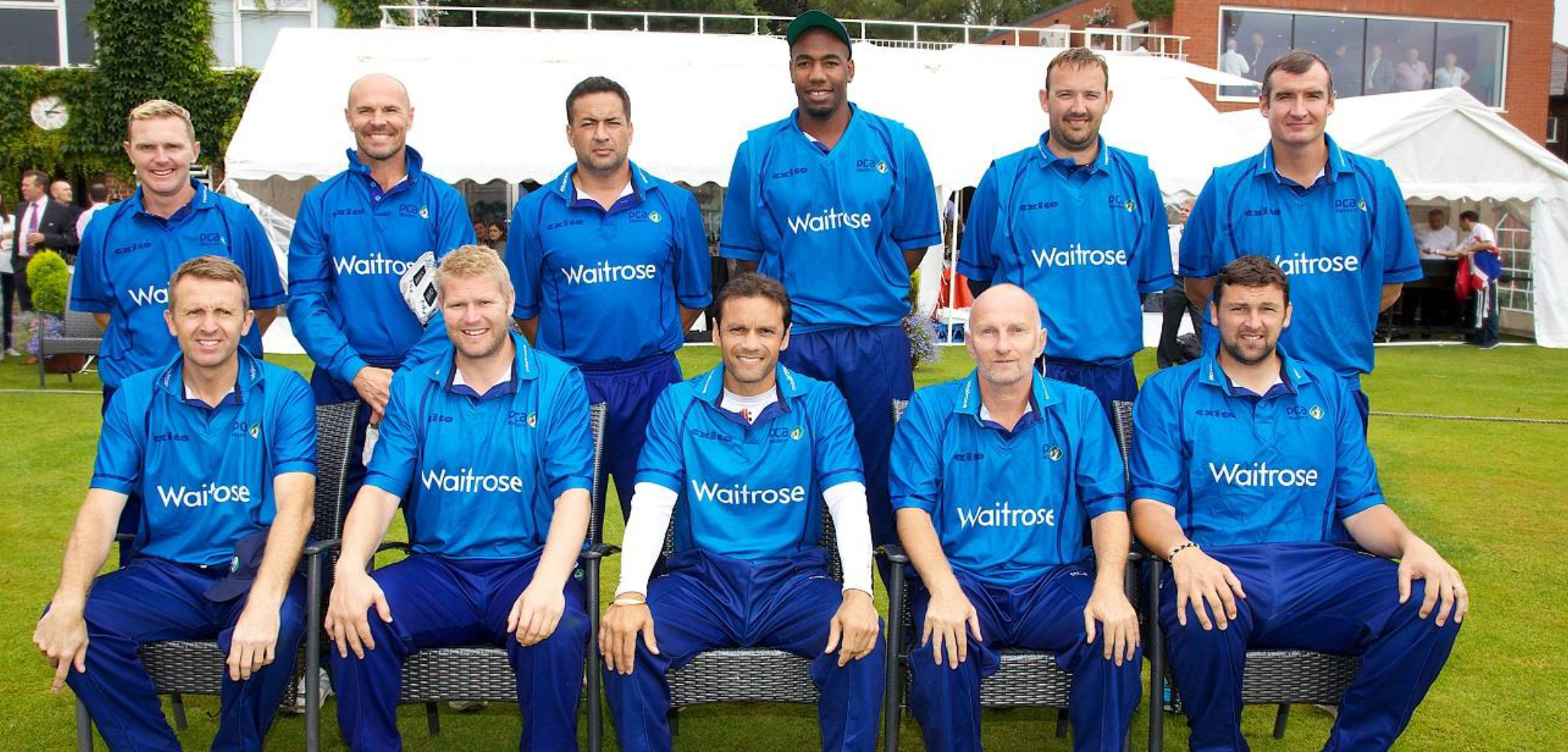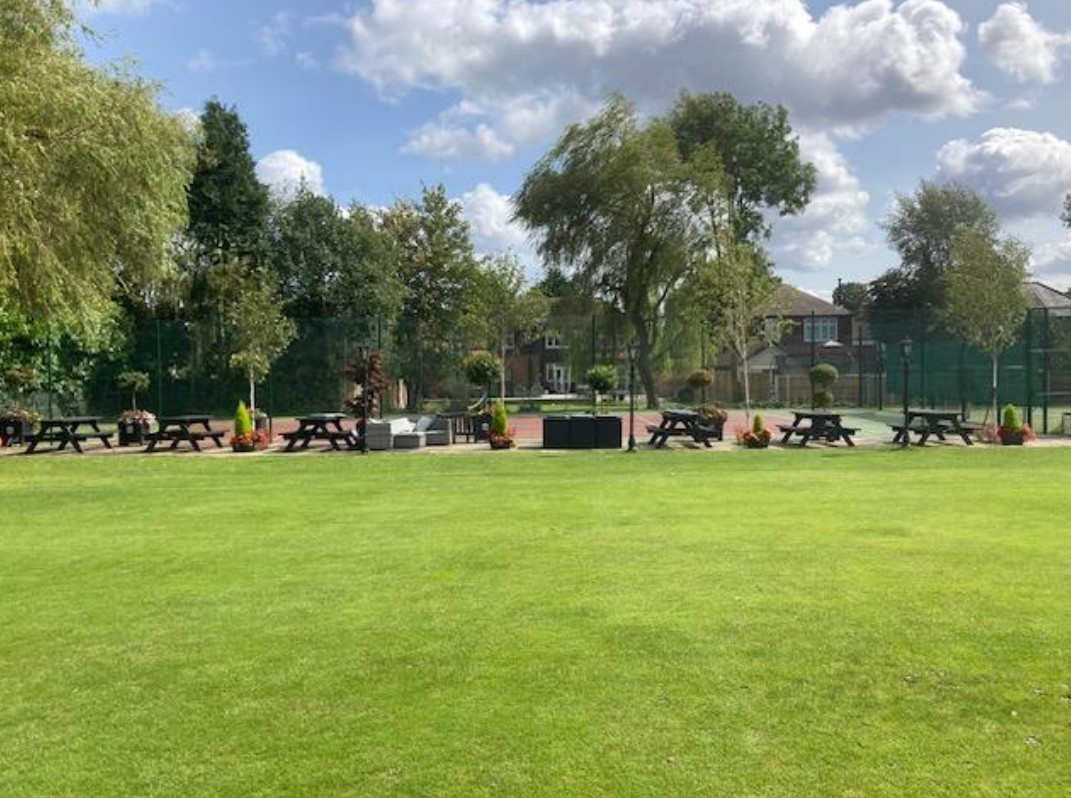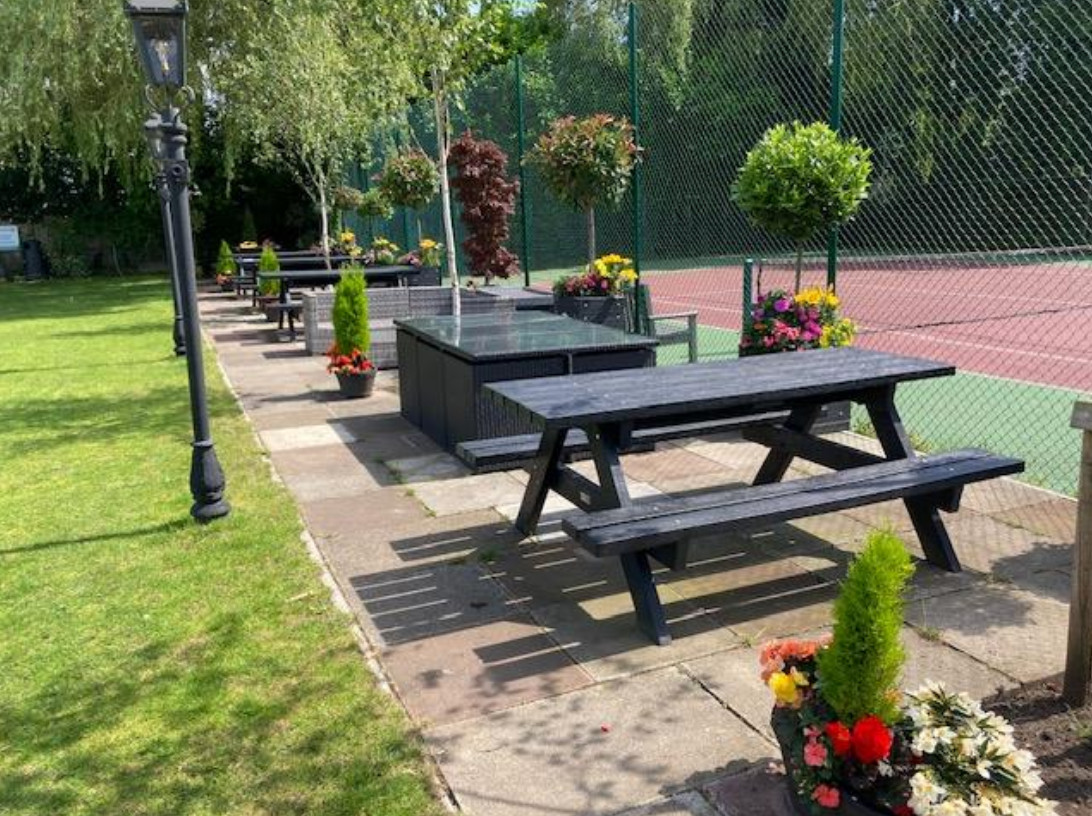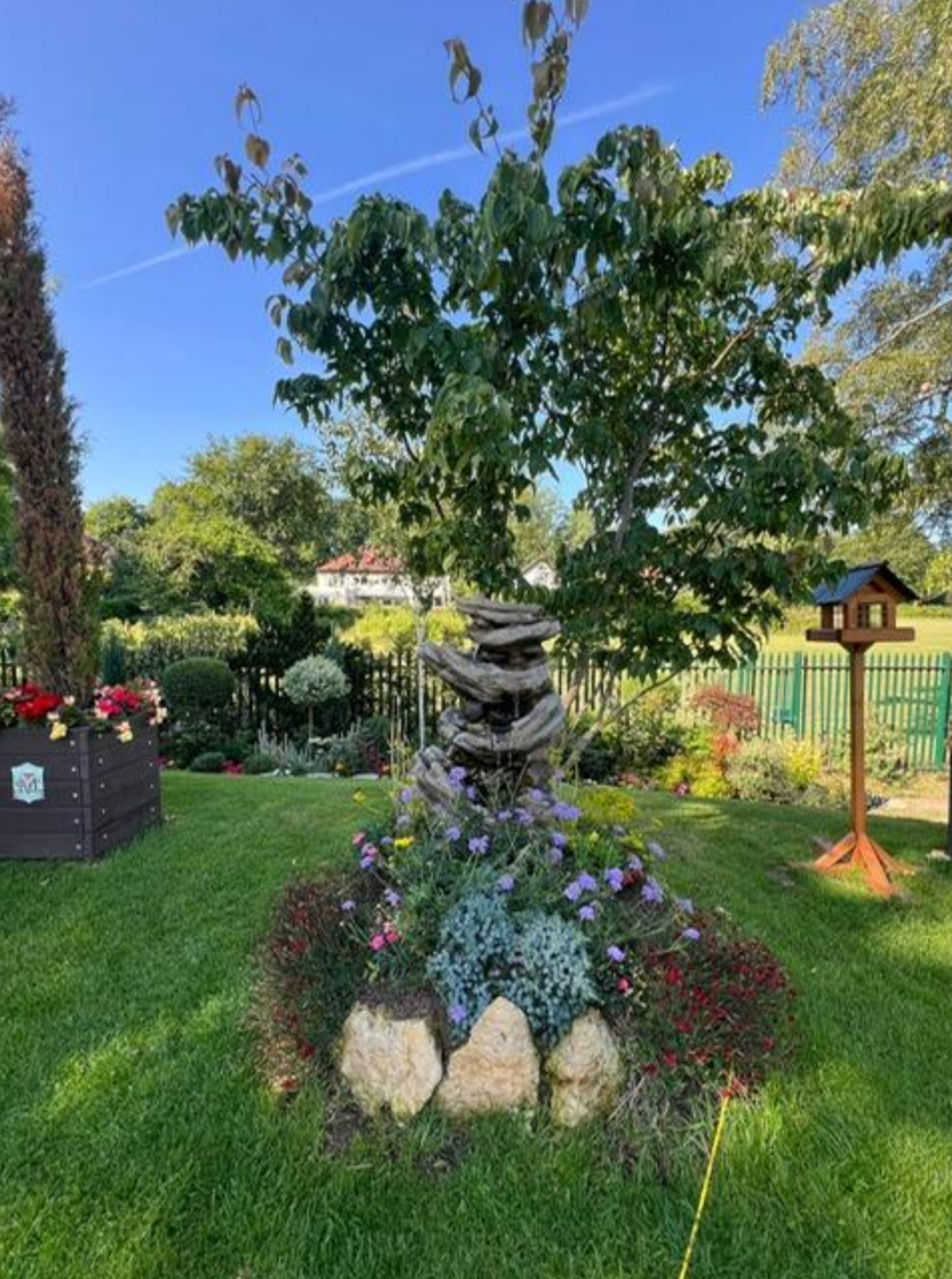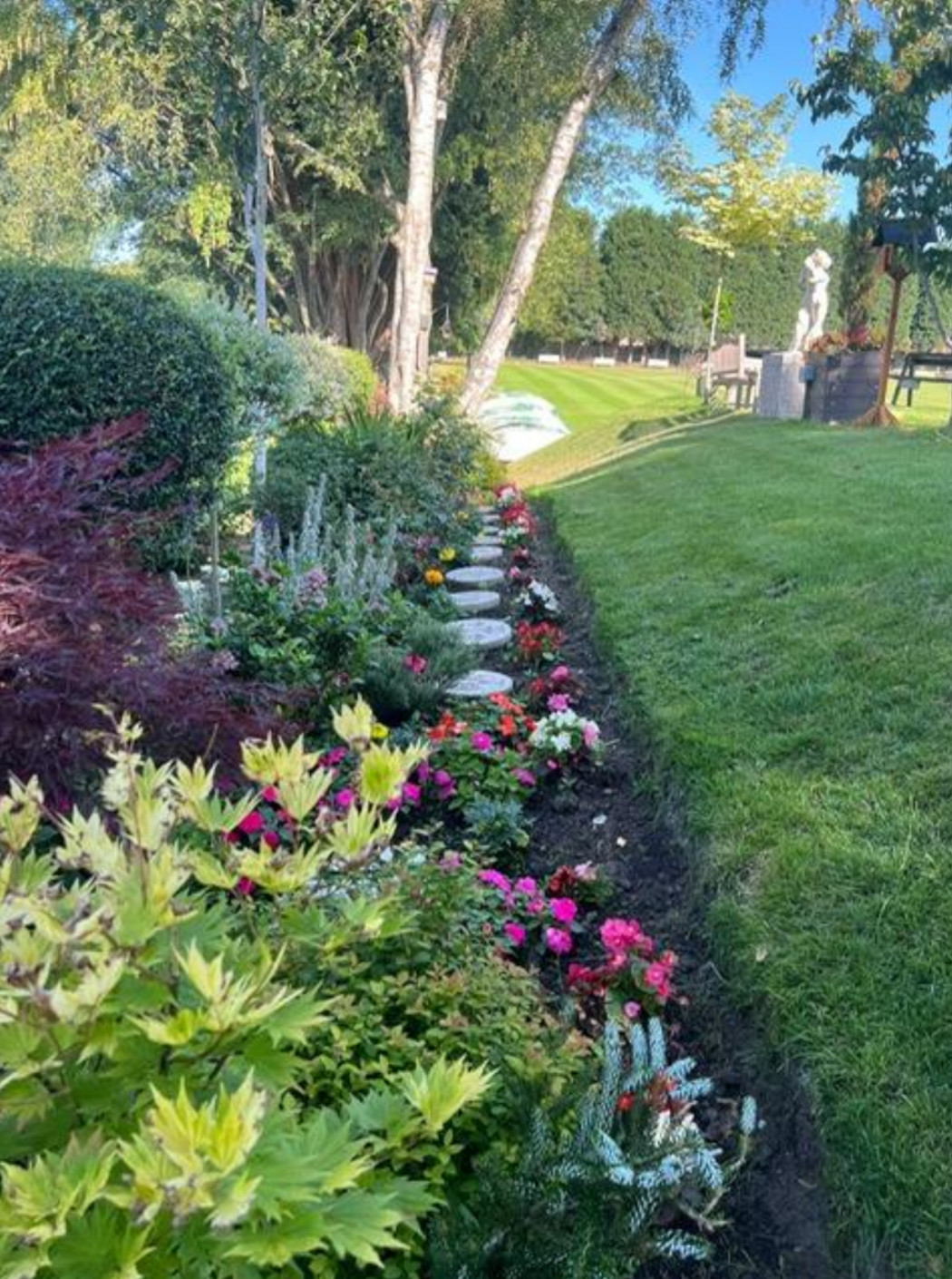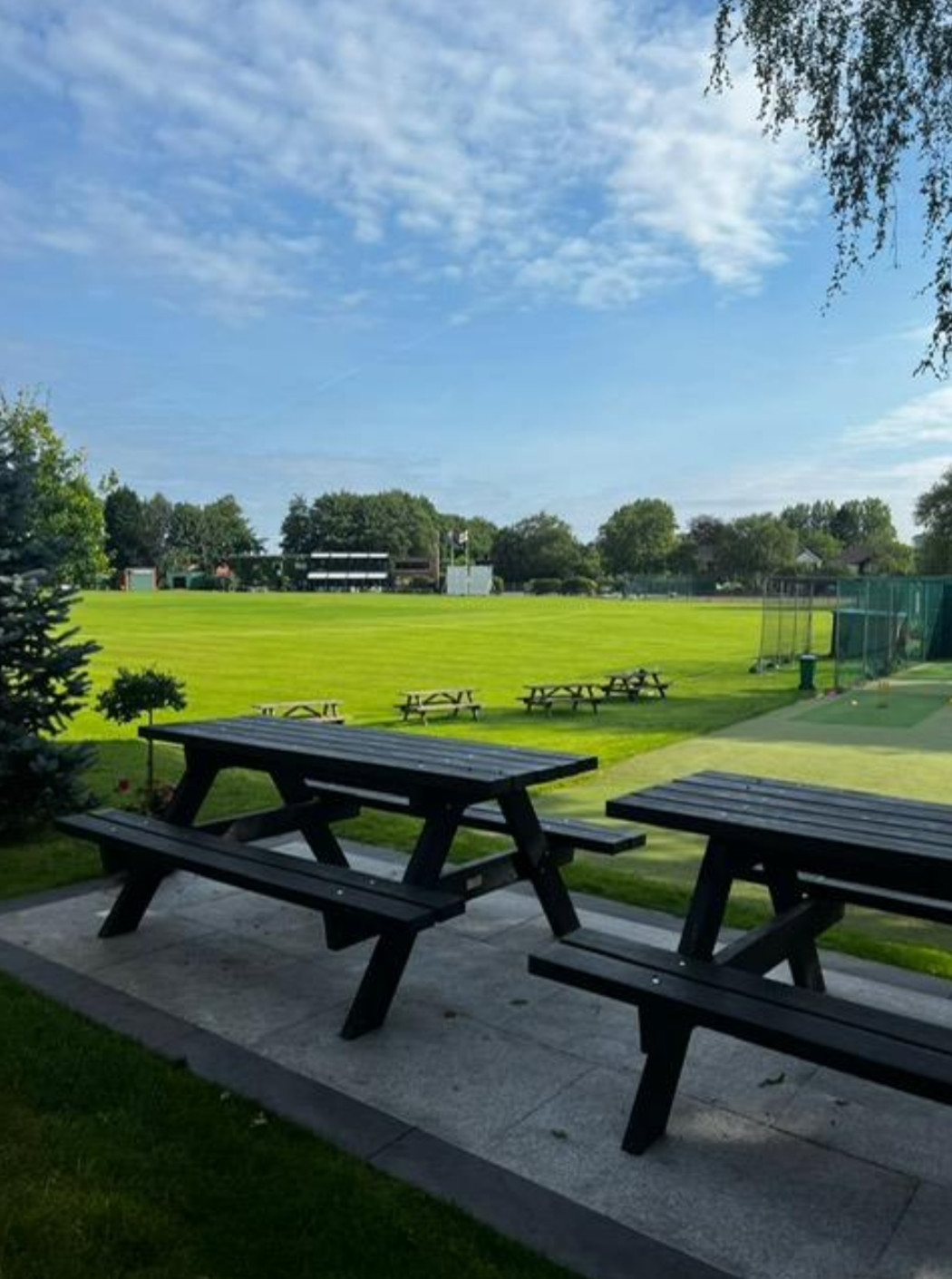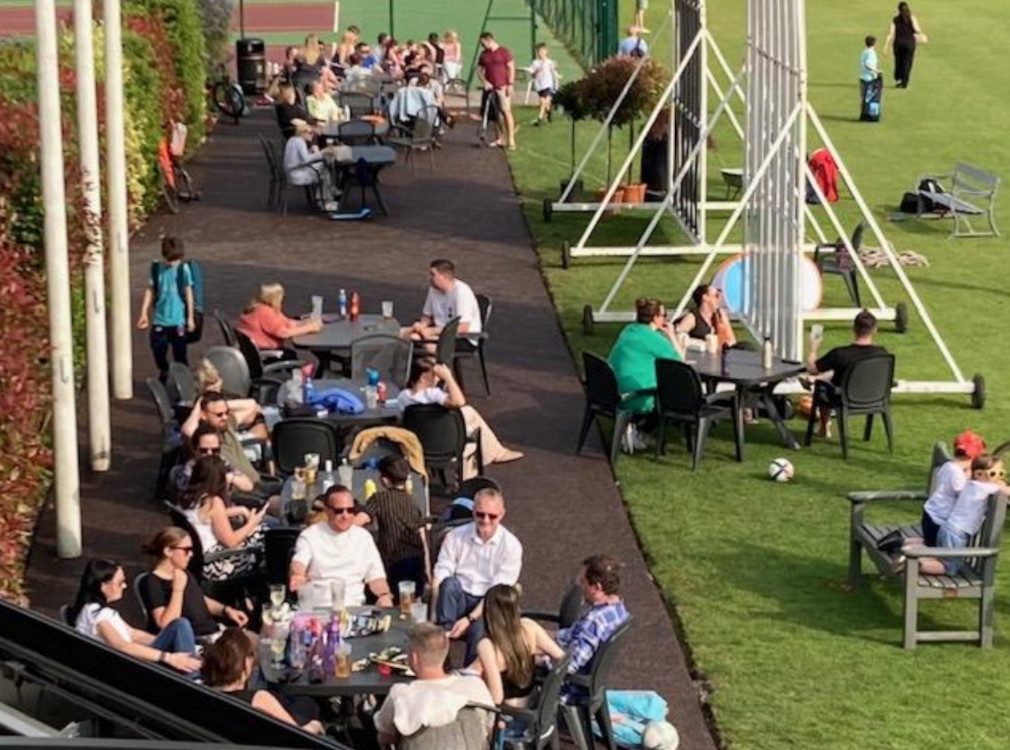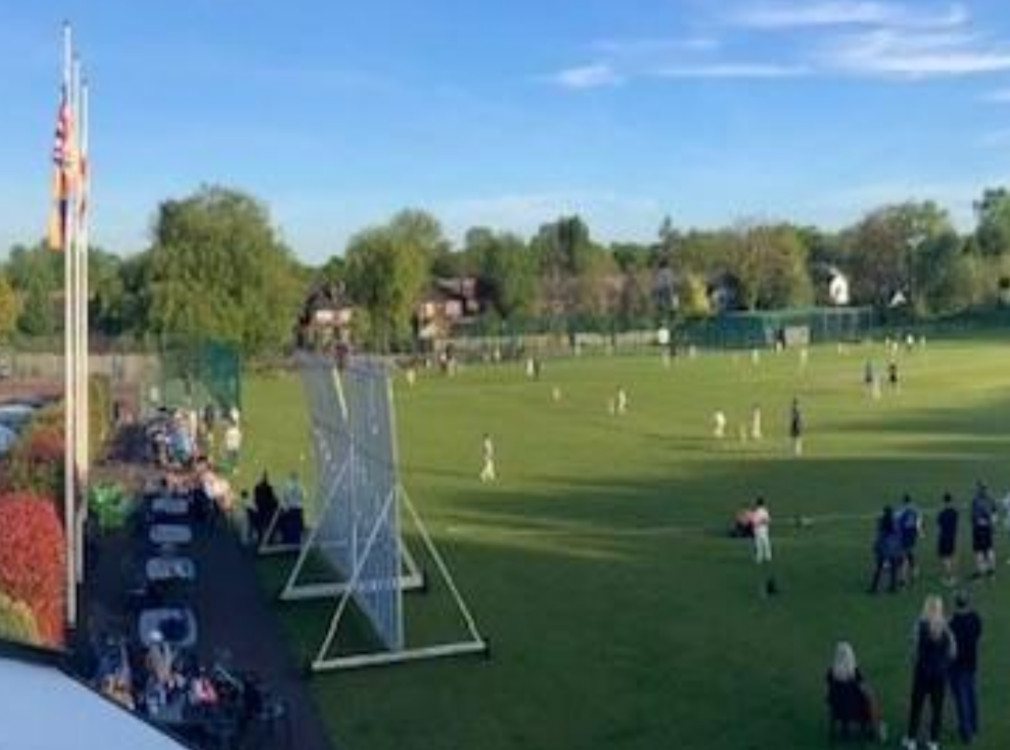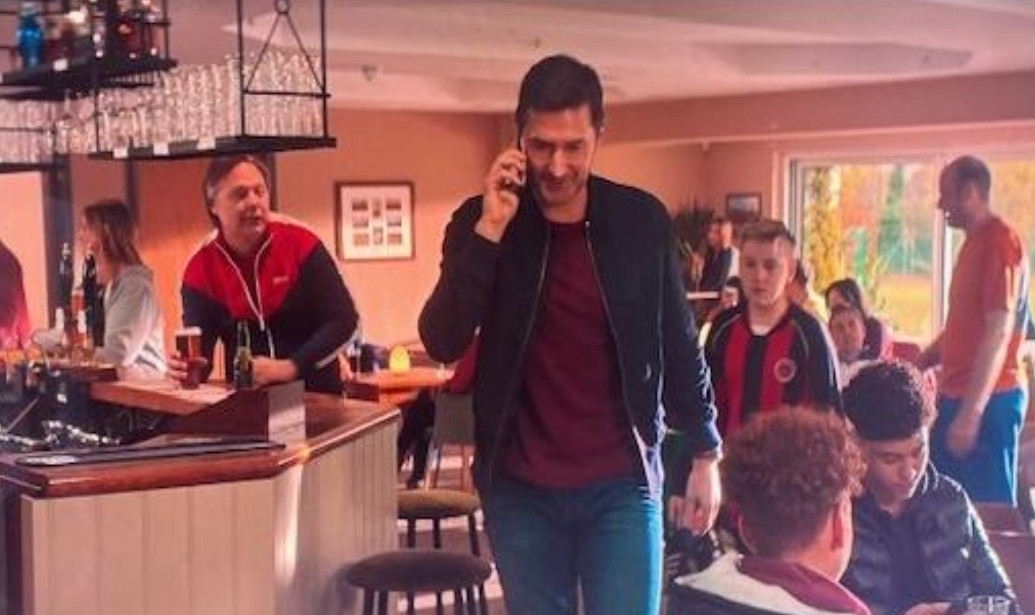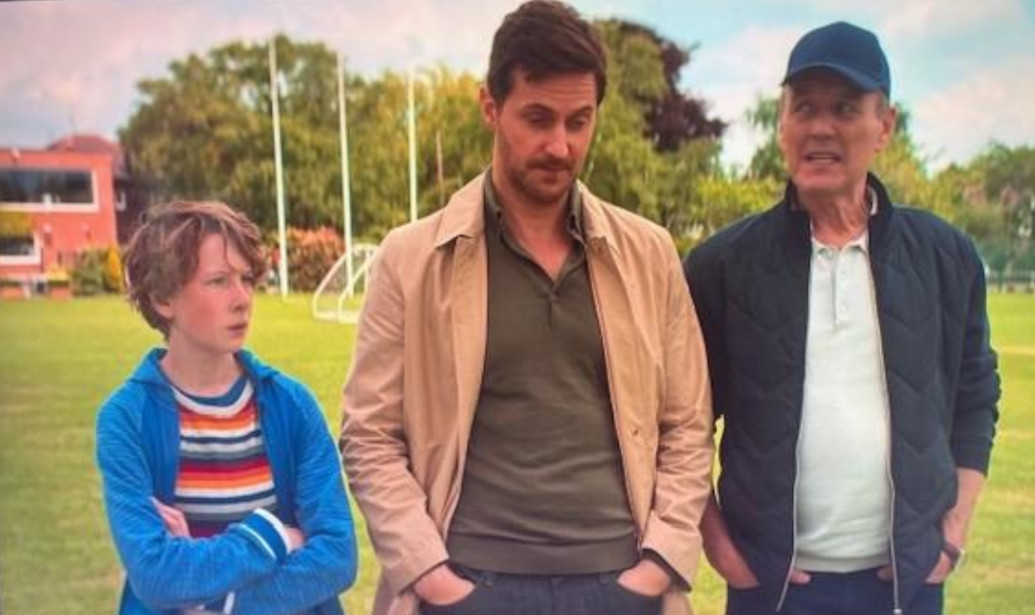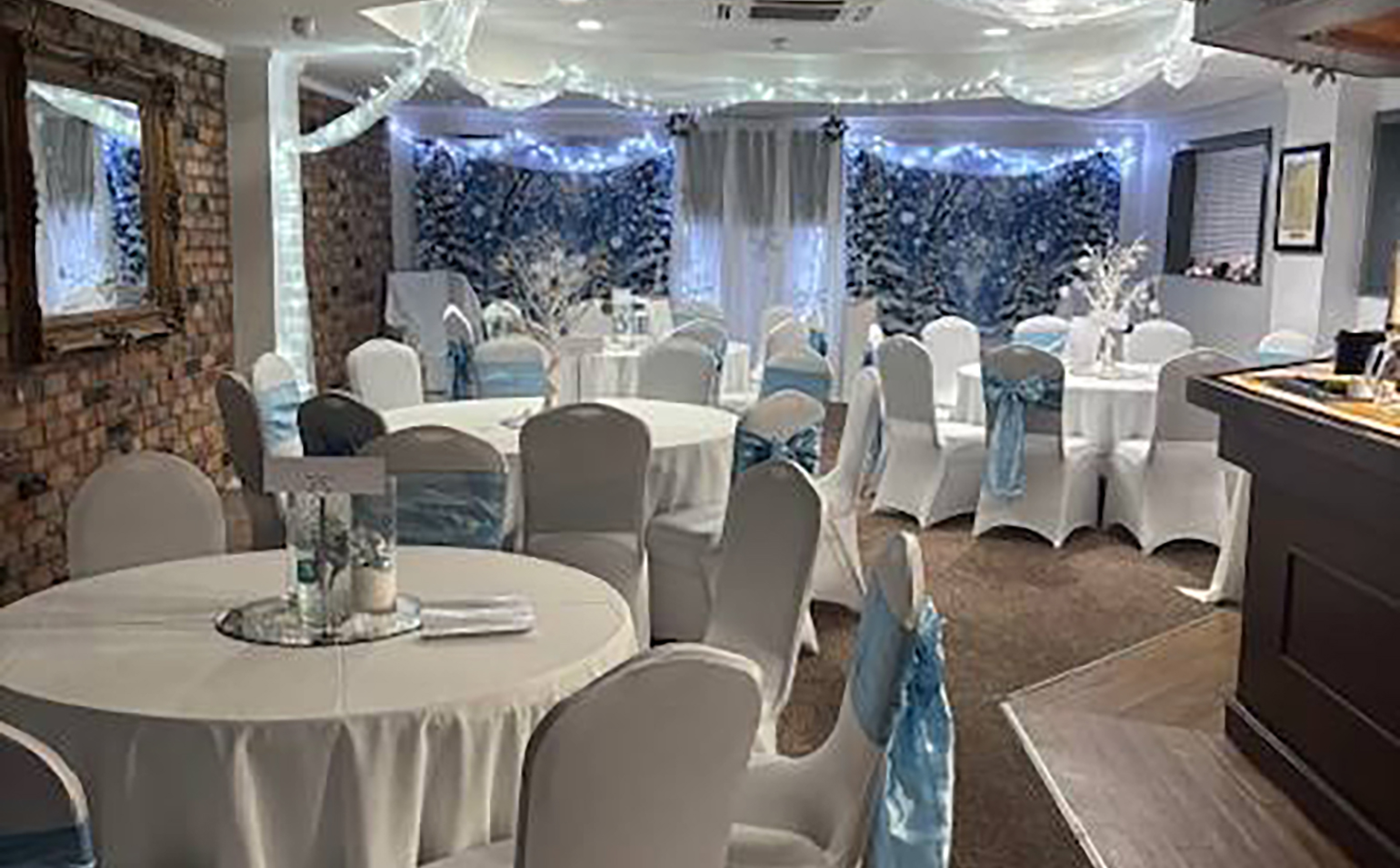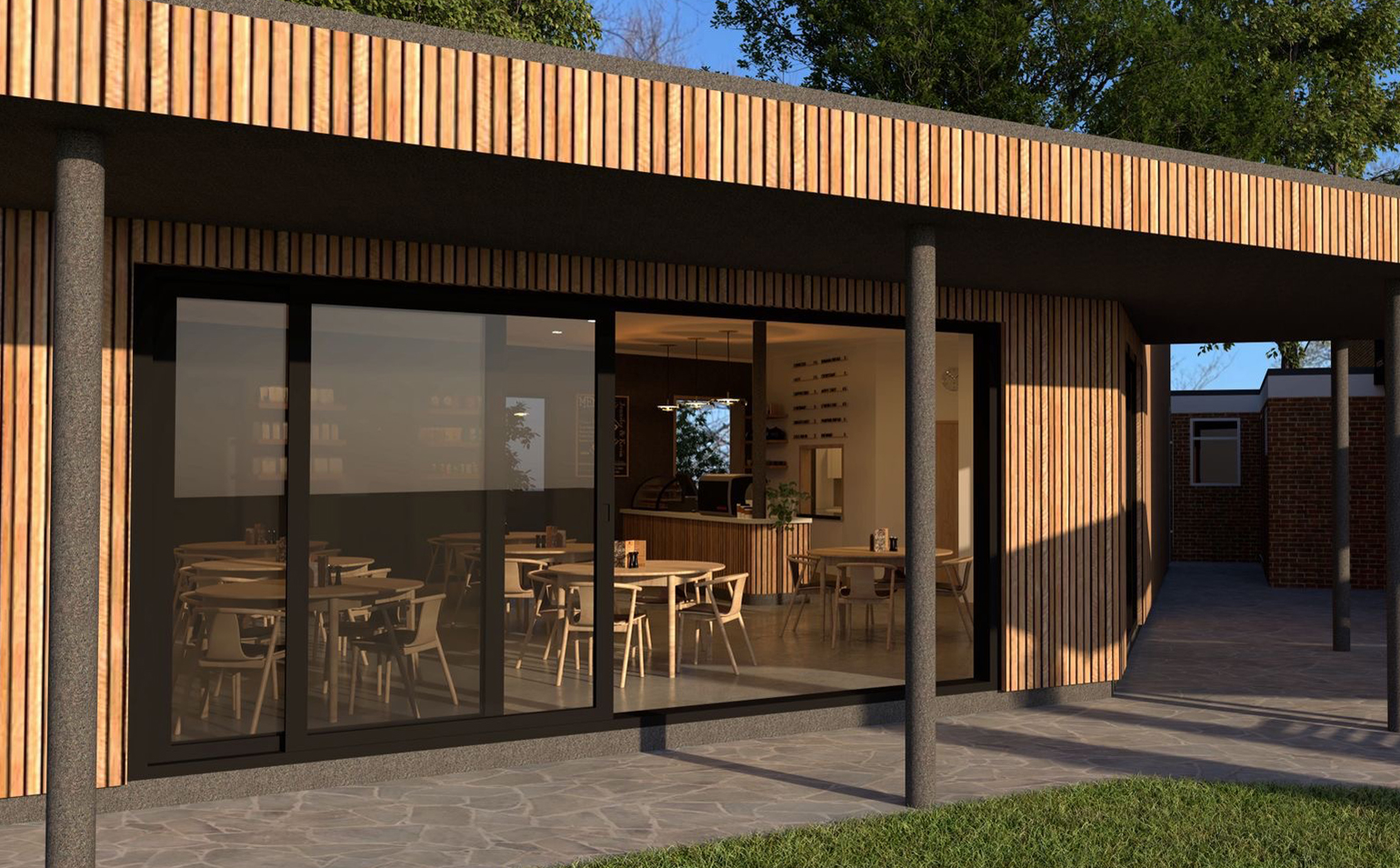the history of our wonderful club
In 1903 pedestrians walking over Quaker Bridge en route from Monton to Eccles would have seen ahead of them the grand and seminal Victorian houses of Ellesmere Park. On the left and right would have been open fields, and below the railway line from Eccles to Swinton. If it had been a Saturday, there may have been a lacrosse game on the field to the left because this had just become the home ground of the Monton Lacrosse Club and sport was played on the site for the first time.
This area was known as the “Quaker Bridge Ground”, and would, over the next century or so, slowly evolve into the wonderful Monton Sports Club we enjoy today.

Clubhouse - 2015
In 1911 a small wooden pavilion was built by the lacrosse club with two changing rooms and a veranda. This facility was to remain operational for the next 65 years.
In 1921 Monton Cricket Club moved to the Quaker Bridge Ground and, jointly with Monton Lacrosse Club, agreed a fifteen year lease with Bridgewater Estates. A cricket pitch and two grass tennis courts were immediately laid out. These tennis courts were at right angles to what is now Welbeck Road and were later converted to hard courts, which in turn were sold in 1976 to build houses and provide finance to build the West Wing (changing rooms, Oakwood Lounge and squash courts).
At this time in 1921 the club membership was 96, but the tennis section grew enormously and by 1922 it had grown to 288. The annual subscription was one pound and five shillings for gentlemen and one pound for ladies.
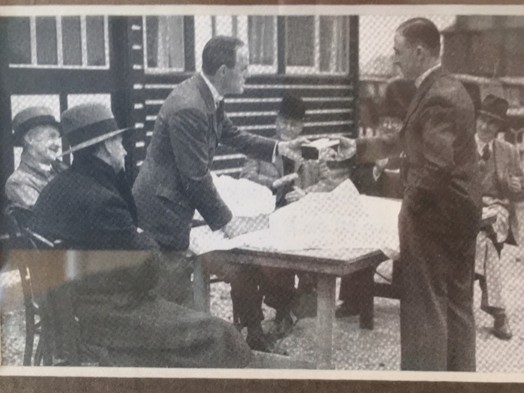
Opening the Clubhouse - 1936
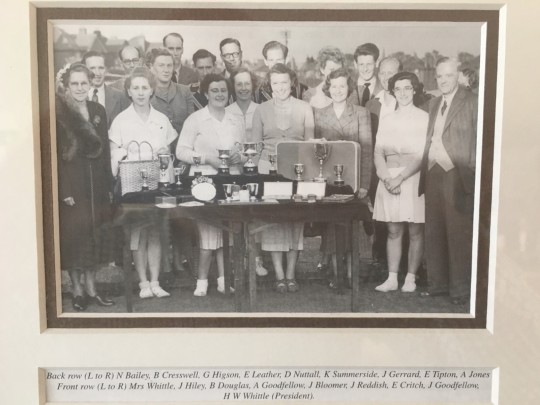
Tennis Finals Day 1950
In 1927 Bridgewater Estates owned the ground and offered it for sale at a price of £1,000. The members were approached for loans to enable the purchase, but the response was poor and inadequate. This was diametrically opposed to the position nearly 100 years later in 2013 when more than a hundred members donated enormous amounts of money to finance the construction of the East Wing.
A further attempt to purchase the ground was conceived in 1929. This involved a “Three Day Bazaar” at Eccles Town Hall organised by the hard working and highly motivated members. The Bazaar comprised many stalls selling all manner of goods. There were also a variety of refreshments available together with concerts and other entertainment including an orchestra which played every afternoon and evening.
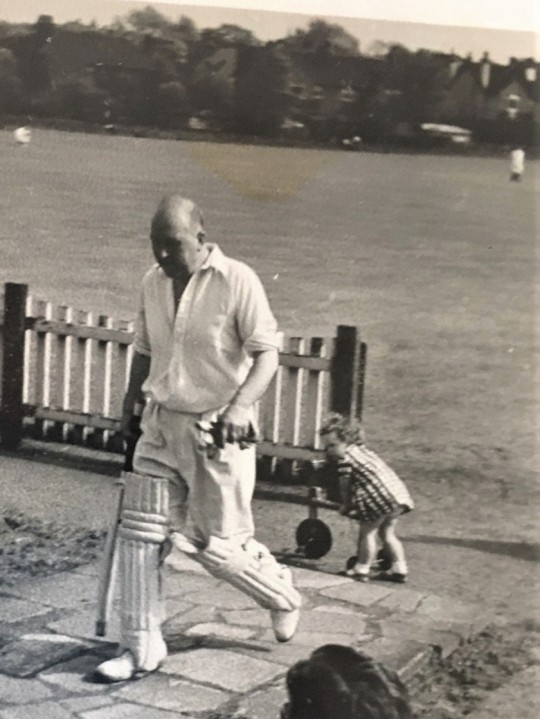
Two 1st XI Cricket Captains - George Mellor and Keith Brookes
The event was a raging success and the massive amount of £1,400 was raised. The ground was purchased from Bridgewater Estates but subject to a covenant stating that the land must be kept as “an open space for the purposes of sport”.
In the early 1930’s two shale tennis courts were added to the two grass courts. By the mid 1930’s new houses were being built along an extension of Cavendish Road, which is now Welbeck Road. This meant access to mains services was available and therefore a decision was made to further develop the club premises. Toilets and a shower were added along with a clubhouse extension including ladies changing facilities, a kitchen and a bar. The existing wooden pitched roof survives from this development. The total cost was £350.
The new pavilion was opened in May 1936 by Ernest Tyldesley, the well-known Lancashire cricketer. The Eccles Journal described the club’s new facilities as the “finest in the area”. Well, what goes around comes around, because with the 2013 development the club is unequivocally the best for miles around.
The outbreak of war in 1939 caused a pause in the evolution of the club. The AGM of 1943 noted that there were 47 members serving in the forces.
Much hard work by a few members ensured there was some intermittent cricket and tennis played each year during the war. The 456th Heavy Anti-Aircraft Royal Artillery Battery was fortuitously stationed in Ellesmere Park. Many of the soldiers played at the club and carried out maintenance work. Unfortunately, a plaque presented to the club after the war recalling this happy association has since been lost.
It says much for all those involved that at the end of the war the club had an improved financial position despite a greatly reduced membership. In 1946 another shale tennis court was added at the rear of the houses on Cavendish Road. Also, in 1946 Boardman and Eccles Lacrosse Club moved to Quaker Bridge and started renting the ground.
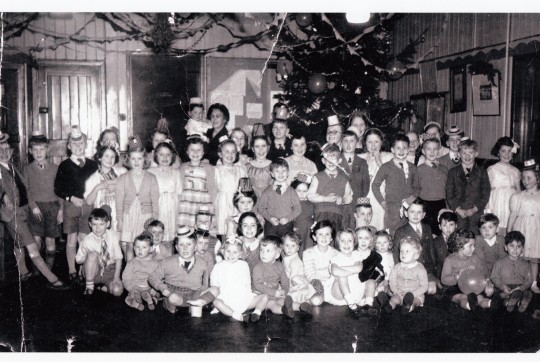
Christmas Party 1951
In 1953 the club celebrated its Jubilee Year which also coincided with the coronation of the new Queen. An Opening of the Season Dance was held at Worsley Court House. On Coronation Day itself Monton beat long standing rivals Worsley by 9 wickets having dismissed the visitors for a measly 34 runs. At the AGM the treasurer reported that the club was financially sound. There were 508 members including 300 playing members and 70 juniors.
The railway line at the side of the club closed in 1953 when a tunnel in Swinton colloquially known as Black Harry collapsed, and three houses in Temple Drive fell into the tunnel killing 5 people as they slept. In 1964 British Rail offered the land for sale and after some keen negotiation a fabulous deal was struck whereby a strip of 63 feet of additional land was acquired to the right of the ground. This added two thirds of an acre to our land portfolio. The price was £108.7s.5d, or £108.37 in “new money”.

Fifty glorious years - 1903 to 1953
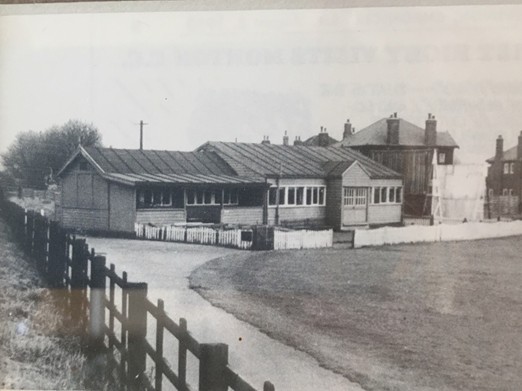
Clubhouse from Old Railway in 1961
The railway land was about a metre higher than the cricket field and apart from selling some topsoil nothing much was done for some time, and the land became a paradise for motor bike enthusiasts and fly tippers.
A solution regarding how to use the land materialised in 1971 when the local authority decided to build a scenic walkway along the old railway line. The club agreed to surrender 15 feet of land for the footpath in return for the council levelling and seeding the ground in addition to erecting a 6 feet high fence, which they agreed to maintain in perpetuity. The soil and hardcore was removed and used in the building of the M62 motorway.
Through the 1960’s the club was kept afloat, but barely viable, by a small nucleus of members who were prepared to work hard. The pavilion was somewhat dilapidated, and the changing rooms were still those erected by Monton Lacrosse Club in 1911.
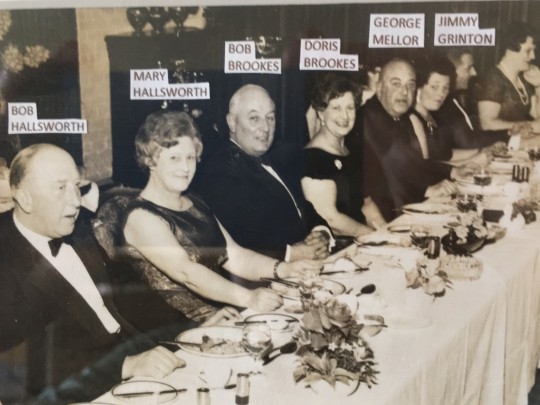
Boardman & Eccles Lacrosse Dinner 1967
In 1969 a small grant was obtained from the Department of Education and together with loans from Lancashire Playing Fields Association and Scottish and Newcastle Brewery an extension was carried out at the car park end of the club. This comprised a new kitchen, ladies’ toilets, and an additional changing room. The total cost was £5,200.
Many considered the name Monton Cricket Club to be too sectional and insular, especially given the likelihood that Boardman and Eccles Lacrosse Club would amalgamate with the cricket and tennis sections. Consequently in 1968 a new set of rules for Monton Sports Club were unanimously adopted and Monton Cricket Club per se ceased to exist.
Boardman and Eccles Lacrosse Club had paid rent to Monton Cricket Club for the use of the ground since 1946 and after much discussion became the Lacrosse Section of the Sports Club in 1970. This amalgamation swelled the membership numbers to 479.
A view from Quaker Bridge - Late 1960s
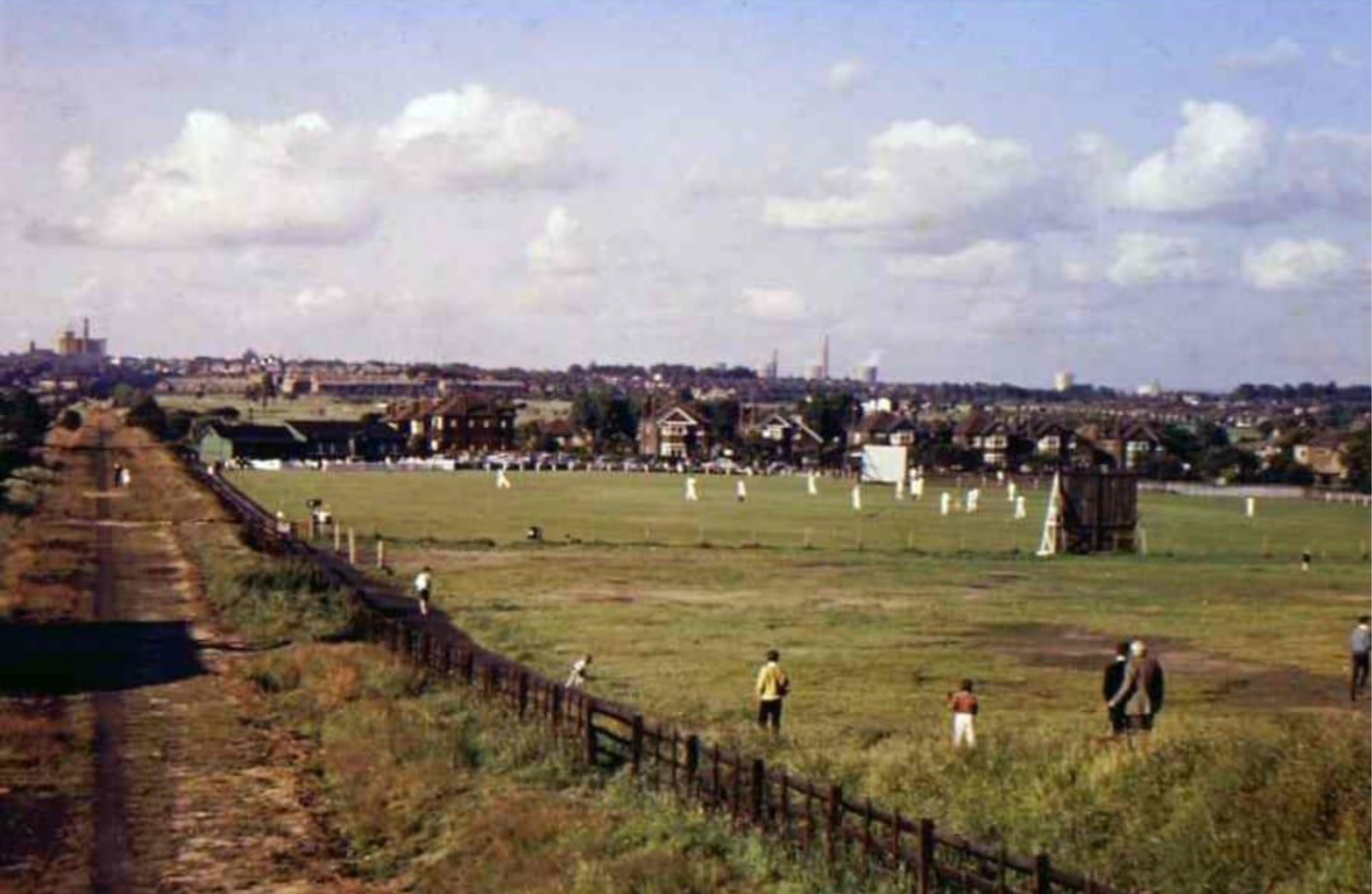
Between the two world wars there were several lacrosse clubs in the Eccles area alone, and these included Boardman, Barton Hall, Eccles and Monton. All the original players from Boardman who founded the club came from Boardman Street in Eccles, hence the name. Boardman eventually combined with Eccles and the other clubs became extinct. These teams have now dwindled to one which is our beloved Boardman and Eccles.
In those good old days, the lacrosse section had a black-tie dinner every year and these events were very well attended. Today we still have a successful lacrosse dinner every year.

Boardman & Eccles Lacrosse Dinner 1967
Balancing the books and paying the bills remained a perennial challenge, and by the mid-seventies the club was destitute and in a severe state of disrepair, with holes in the wooden changing room floors.
Consequently, a massively ambitious development project was planned resulting in the construction of what is now the Oakwood Lounge, new changing rooms, ladies and gents toilets and, most importantly of all from a revenue perspective, two squash courts. This is now colloquially known as the “West Wing” and immediately transformed the club into a thriving and highly lucrative operation.
The £35,000 cost had been raised by selling two dilapidated tarmacadam tennis courts for £14,600 upon which two houses were subsequently built. A brewery loan was raised and much successful fund raising carried out by a highly motivated membership, including a hugely successful “It’s a Knockout” with the now discredited Stuart Hall as the main attraction. Approximately 3,000 people were expected but 7,000 turned up resulting in a highly lucrative day.
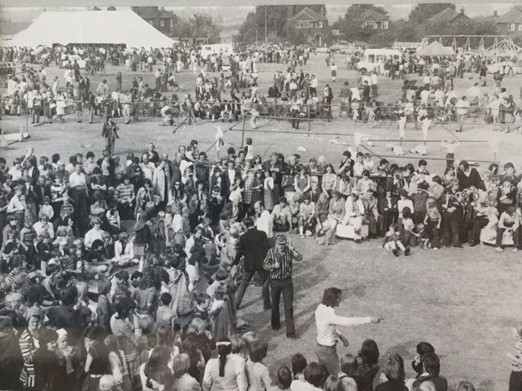
It’s a Knockout with Stuart Hall in 1976

Lord Haselhurst
The new facilities were opened in November 1976 by the Right Honourable Dennis Howell, MP – Minister for Sport. The development project was led by Alan Haselhurst who later became MP for Saffron Waldon, was knighted for his services to politics and served as Deputy Speaker in the House of Commons from 1997 to 2010, after which he entered the House of Lords. Alan was ably supported in his endeavours by Keith Brookes, who was secretary, and Geoff Tims who was treasurer. He was made a life member in 1982.
By 1978 the club had made enough money to build a residential manager’s flat above the changing rooms and toilets. Albert Lightfoot and his family joined our operation from Northamptonshire County Cricket Club where he was groundsman, after serving that club as a first class cricketer for 17 years. Albert looked after the ground and was bar steward for many years.
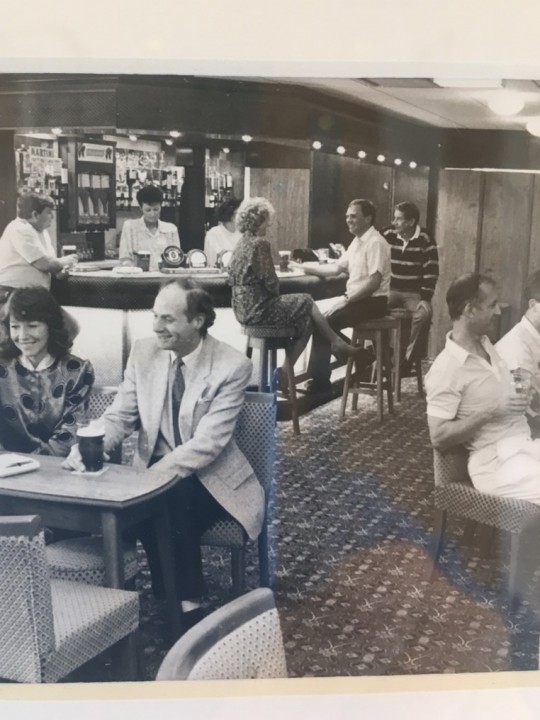
The Oakwood Lounge 1990
After a couple of decades of high profitability, impressive financial revenue streams began to dwindle once more, and the club found it progressively harder to fund essential maintenance requirements and improvement projects. During this period Harry Brown, founder of Oakwood Engineering, did a magnificent job of running the club, serving as treasurer for an unbelievable 25 years. He was substantially supported by his business partner Bill Gray, who served as secretary for a mere 22 years.
In 1980 a car was raffled in conjunction with the British Olympic Association and the money raised was used to extend and surface the car park. Further developments through the 1980’s included extending the main function room and kitchen out towards the field by 8 feet. At the same time the ladies’ toilets, changing room and store room built in 1969 at the car park end of the club were converted into new ladies and gents toilets, thus making the function room self-contained.
Other projects included building the patio and a combined brick scoreboard and ground equipment store. In 1983 numerous deciduous and coniferous trees were planted on two sides of the ground. These have created the wonderfully picturesque ground we enjoy today. The trees were sponsored and named for the members who paid for them. A schematic indicating the layout is displayed in the club. The shale tennis courts were finally upgraded to “all weather” and in 1988 a fourth court was added.
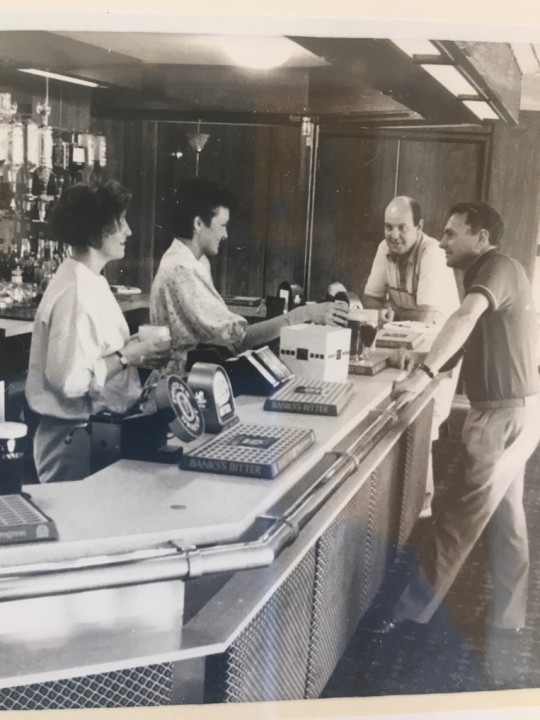
The Oakwood Lounge 1990
In the cyclic nature of Monton and many other clubs the 1990’s and “noughties” found our operation in the financially negative part of the cycle. This may have been a time of relatively poor financial profitability, but there was much merriment in evidence, and Sunday afternoon was a particularly popular time to imbibe and gather in what is now the Oakwood Lounge.
In 2011 the club had once again reached rock bottom financially and was barely solvent. There were no cricket practice nets, the tennis courts were verging on unplayable, and the clubhouse was in serious need of improvement. However, a very small number of members, and one in particular, donated a total of £96,000 which resulted in three synthetic cricket practice nets, resurfacing of three tennis courts, renovation of the gents’ showers and toilet area, revamping of the Oakwood Lounge, a new outfield mower and cricket wicket covers.
Now we were aiming for the stars, and in 2013 a massively ambitious project to rebuild and expand the car park end of the club was conceived on the same scale of the “west wing” in 1975. This resulted in what is now known as the “east wing”, comprising a state of the art extended kitchen, swish new ladies’ and gents’ toilet areas, all topped off with the upstairs Sports Bar.
The initial extremely optimistic concept that a lot of members would stump up large amounts of cash was not ill founded. Of the £260,000 development cost over a hundred members contributed an amazing £164,000, and the remaining cost was financed by a grant of £36,000 from Viridor Waste Management and a £60,000 bank loan.
Development momentum was now considerable and the following year an open balcony accessed from the Sports Bar was constructed at a cost of £28,000, again financed by the members.
In 2015 the downstairs Cavendish Suite underwent considerable refurbishment, the main features of which were a new ceiling and lighting throughout. This cost about £60, 000 financed from club funds.
What was originally the fourth tennis court had laid derelict for many years, and in 2017 it was transformed into a MUGA (Multi Use Sports Area) at a cost of £60,000. This was financed by a grant of £38,00 from Viridor Waste Management, £12,000 from members donations and £10,000 from club funds.
We were still on a roll, and by 2020 it was time for further major construction resulting in both the balcony and patio pergolas at a total cost of £105,000. These were financed by members donations and club funds.
A year later it was the turn of the Sports Bar serving area, which was expanded to cater for ever growing demand at a cost of £20,000. The same year the three tennis courts were resurfaced costing £23,000. Both these projects were financed by club funds.
In 1924 the ground patio and seating area adjacent to the car park was created which was both a considerable aesthetic and practical improvement, because the grass area it replaced does not need maintaining. The cost was £21,000 funded by a £3,000 member donation and £18,000 of club funds. In the same year the Football Association gave us a grant of £25,000 towards the cost of new ground equipment comprising the tractor and several large bits of kit to attach to the back thereof. The balance of the total cost of £40,000 was financed from club funds.
All the above major development projects are summarised in the table to the right, along with some that were less substantial, and major maintenance projects included.
Summarised, in “big picture” figures, the total expenditure over the last fourteen years has been £900K, almost exactly half of which has been donated by over 100 members, along with roughly £300K from club funds, £110K grants and £30K from two insurance claims.
Apart from the extraordinary financial and structural achievements since 2011 detailed above, the development and growth of junior sports was no less spectacular.
Ten years ago, we made the adventurous decision to have one junior football team playing on the outfield in the winter. This was very successful and by 2018 we had seven teams, which by 2025 had grown to ten. Many of these teams were very successful winning numerous cups and leagues.
In 2017 we had no junior tennis members, but a lady who played on our teams and was a qualified coach started training both adults and juniors. This grew exponentially and within a couple of years we had 65 tennis junior members all with at least one parent as a social member.
In 2020, after much discussion, the Monton Jaguars U11 girls football team was formed. After a slow start they went from strength to strength and are now an U15 side with some outstanding players. When they were U14 they won both the league and the cup.
Four years ago, we had a few girls join their brothers at junior lacrosse training and this quickly escalated to the extent that this year we will be fielding U11, U13, and U15 girls’ teams. In addition, next year there will be a senior women’s team. There are now over forty girls that practice rigorously at the club every Sunday morning, seventeen of whom represented Lancashire at different age levels, and seven of those have been chosen for the England Pathway.
Only two years ago we started junior girls’ cricket. This year we fielded U13 and U15 teams. Both reached the north of England ECB Cup semi finals meaning both are in the top four teams in the country in their age group.
So, from not a single female junior member eight years ago we now have about 110 spanning four sports. Total sports team participation, including squash, involves twelve senior teams and twenty eight junior teams. Coaching and managing the junior teams there are about 50 people, all of whom are members and unpaid.
PCA games
D. Maddey P. Nixon A. Holyoake A. Tudor C. Schofield M. Loye
D. Cork M. Hoggard M. Ramprakash N. Fairbrother S. Harmison
Over the last 12 years we have had nine major cricketing and fundraising events whereby our 1st XI has played a team of ex England cricketers under the auspices of the Professional Cricketers’ Association. These nine events have cumulatively made £136,000 clear profit which has helped substantially in financing the £908,000 of development projects described above. The PCA team in the first match in 2014 played a total of 248 test matches and 281 one day internationals between them.
The last match played on 1st August 2025, was particularly successful, largely because the event was expanded to include an Open Sports Day showcasing our five sports throughout the afternoon. Before the PCA match, to the delight of many, our under 14 girls’ cricket team defeated the under 14 boys’ team, highlighting their very impressive skills. The total clear profit for the day was £21,000.
Changing the landscape
In 2021 much landscaping took place resulting in the creation of the Willow Patio and Mound, both incorporating patio areas with much garden furniture, and many trees and flower beds. Effectively with much hard work and investment we have created a very large garden with a massive lawn.
netflix
In 2019 Netflix used the club to film large parts of a six part series called The Stranger, based on the Harlan Coban novel. The show was critically acclaimed.
It starred Richard Armitage (The Hobbit; Spooks), Jennifer Saunders (Absolutely Fabulous; French & Saunders), Siobhan Fineran (Downton Abbey; Happy Valley), Dervla Kirwan (Ballykissangel; Goodnight Sweetheart), Anthony Head (the massively successful Nescafe commercials from 1987 to 1993; Buffy and the Vampire Slayer), and Shaun Dooley (Eastenders; Coronation Street).
Netflix liked us that much they were back in 2024 to film another six part series based on Harlan Coben’s Fool Me Once. This was stratospherically successful with over 107 million views worldwide in the first six months. It was also the most watched British series of 2024 and ranks in the all time top ten of Netflix programmes.
Stars include Michelle Keegan (Coronation Street; Our Girl), Joanna Lumley (Absolutely Fabulous; The New Avengers), Richard Armitage (he must feel part of Monton Sports Club), Adeel Akhtar (won a BAFTA for his role in Murdered by My Father; Sherwood))
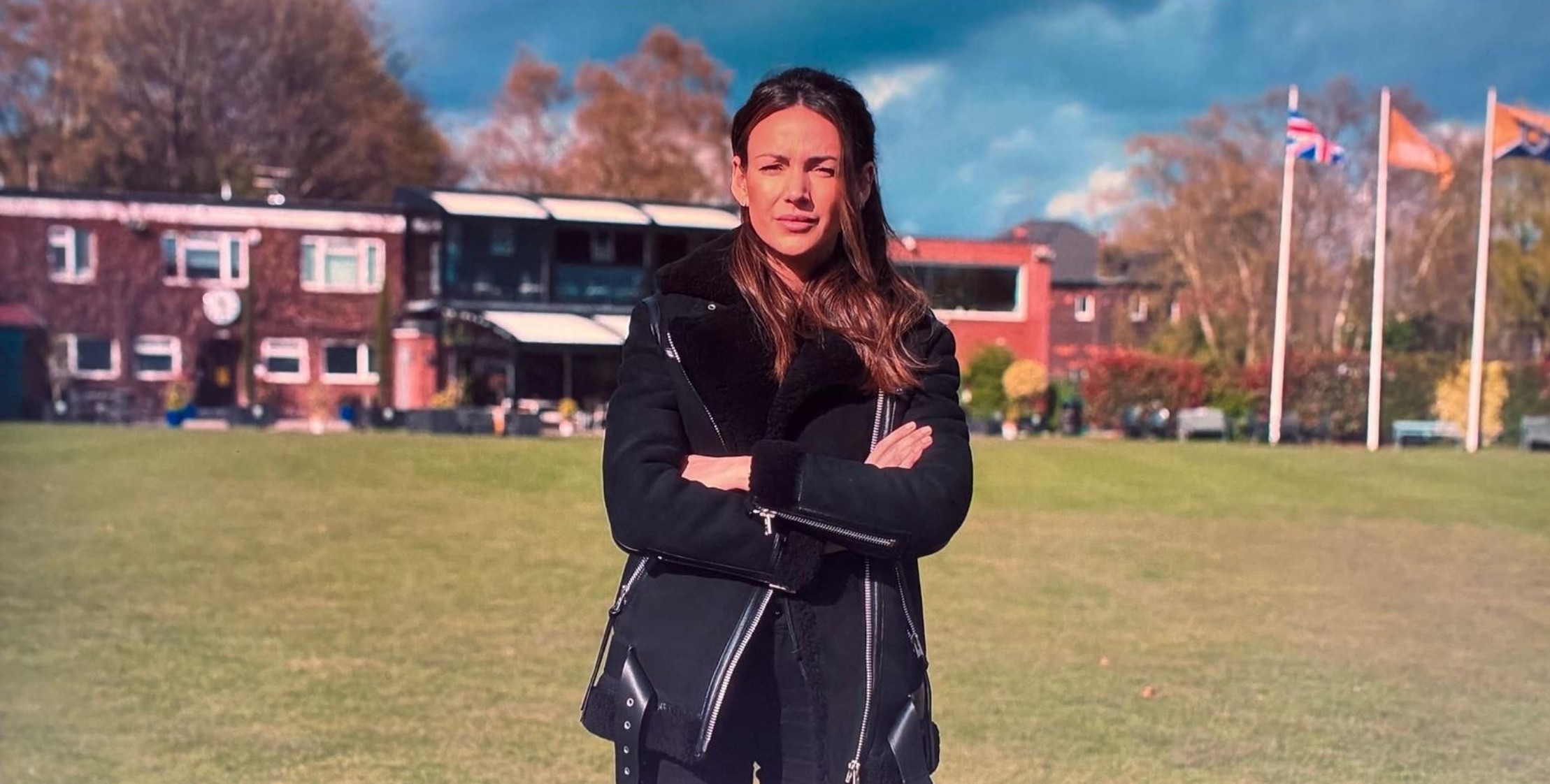
Fool Me Once - Michelle Keegan
sports bar
The central feature of the East Wing development in 2013, was the upstairs Sports Bar with magnificent panoramic views of the sports field and beyond. A recent addition has been the introduction of a third cask conditioned beer in the form of reincarnated Boddingtons, now brewed by our main supplier J. W. Lees in Middleton. We have an excellent relationship with this relatively small family-owned brewing company, with whom we have been dealing for the last thirty years. Long may it continue!

Julie & Mel - Mum & Daughter
We have a wide variety of venue choices to suit all sizes of events, from small family gatherings to multi-stage music festivals.
Please take a look at some of the possible areas that Monton Sports Club has to offer to see which is most suitable to accommodate your needs:
